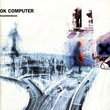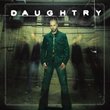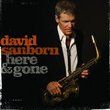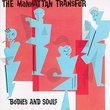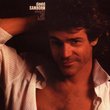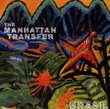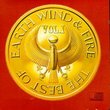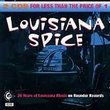| All Artists: David Sanborn Title: Only Everything Members Wishing: 0 Total Copies: 0 Label: Decca Original Release Date: 1/1/2010 Re-Release Date: 1/26/2010 Genres: Jazz, Pop Style: Smooth Jazz Number of Discs: 1 SwapaCD Credits: 1 UPCs: 0602527270531, 602527270531 |
Search - David Sanborn :: Only Everything
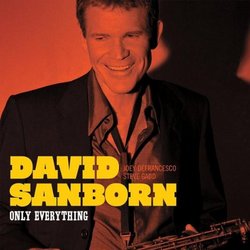 | David Sanborn Only Everything Genres: Jazz, Pop Among the great saxophonists of the past four decades, says one Rolling Stone writer, David Sanborn has earned an identity all his own. He s jazz, he s funk, he s soul, he s pop, he s blues, he s rock. Most remarkably, he ... more » |
Larger Image |
CD DetailsSynopsis
Product Description Among the great saxophonists of the past four decades, says one Rolling Stone writer, David Sanborn has earned an identity all his own. He s jazz, he s funk, he s soul, he s pop, he s blues, he s rock. Most remarkably, he excels in each of these genres with a voice that is both forceful and tender, sensuous and subtle. With Only Everything, the second of Sanborn s homage to the aesthetic of Ray Charles, he revisits his roots with fresh perspective. The New York Times called David s 2008 Here and Gone, the first of his tribute series, a disarming delight. He returns to this territory with renewed passion. If anyone would ask me what Ray or Ray s musicians meant to me, my answer might be, only everything, says David. As a concept, Only Everything is about gratitude. I m grateful not only for the musical life I ve been able to live, but the original sources of inspiration that continue to inform and excite me fifty years after encountering them. The seminal encounter in the musical life of Sanborn happened in 1956 when he was 11. My dad took me to Kiel Auditorium, he remembers, an indoor arena that housed the St. Louis Hawks during the basketball season and, at other times, big band concerts. This was Ray s little band, my first time to hear him in person. I already knew him from records like I Got A Woman, Drown In My Own Tears and Night Time (Is the Right Time). Those songs had fired my imagination. But his live performance transformed me. He sang with a passion I had never before experienced. Although they were pop hits, his songs were soaked in the blues. Beyond the authority of his voice and the spark of his electric piano, two additional forces from Ray s world took hold of me and, to this day, have not let go. The first was Hank Crawford and the second was David Fathead Newman, the band s two star saxophonists. Hank and Fathead each had his own voice that, though distinct, was closely linked to Ray s. It was the voice of pain, joy, release, and relief. Both Hank and Fathead had a mixture of deep-country blues, sanctified gospel, and big-city jazz. The message of this music came across like lightning get a sax. Sanborn got a sax and a voice of his own. Along with a handful of other alto players in the history of the instrument Benny Carter, Johnny Hodges, Earl Bostic, Charlie Parker, Cannonball Adderley, Paul Desmond Sanborn s sound is instantly recognizable. His musical voice is deeply human, a cry of both pain and celebration. When I make a record, he explains, I look for a core sound, he explains, and use it as a unifying source, the aural center of the record. On Only Everything, my producer Phil Ramone, who also produced Here and Gone, agreed that the sound was Joey DeFrancesco s organ. For my money, Joey is the ruling monarch of the Hammond B3. His mastery of the instrument is complete. But more than a technically remarkable player, Joey has a feeling that s unparalleled. No one grooves harder, yet no one relaxes deeper. While this is my first recording date with Joey, I ve been teaming with Steve Gadd for years, a remarkable drummer who plays in service of the music. He colors his drum tones with subtlety, pushing pushes us forward even as he lays back. Similarly Requested CDs
|
CD ReviewsNOT QUITE>>>>> david c | Liverpool, England | 02/08/2010 (3 out of 5 stars) "Great concept--great song selection--great band. So why not more stars? Mr Sanborn plays with as much passion as ever, but I'm afraid not quite with his customary technical mastery. Maybe it's age, but his articulation is not what it was and there are a few too many glitches in his solos--especially when he double times. Having said that, this is a fine album and one has to give Sanborn credit for taking chances.. I'd have liked a guitar in the mix--oh for Eric Gale if he were still with us. His unique jazz/blues style would have been perfect for this." Still chasin' Sanborn William Merrill | San Antonio, TX United States | 01/29/2010 (4 out of 5 stars) "I've been groovin' to the new Davisanborn CD in the car this week as I've been driving around. I like it a lot. So many things about Dave's playing are fantastic -- the great dynamic variation, the inventiveness in improvisation, the fire and power in the notes. I preferred the instrumental tracks to those with vocals. Both singers did pretty well with their songs, it's just not what I was looking for here. (Despite being a JT fan, I came to this album wanting to hear David Sanborn, and the singing by Mr Taylor and Joss Stone detracted from that.) Those instrumental cuts are full of goodness, though, especially the organ solos by Joey DeFrancesco. I kept thinking that anybody who had Mr Sanborn pegged as just a Smooth Jazz guy back in the '80s ought to hear his current music. This is some hot straight-ahead horn blowing! I did have just a bit of a problem with the overuse of the backing horn section, though. Occasionally the horns were so prevalent I started thinking I was listening to a Big Band record, and I'm not a Big Band kind of person. (This was also a problem on his last CD, Here and Gone.)"
|

